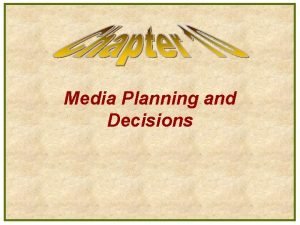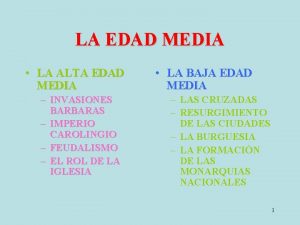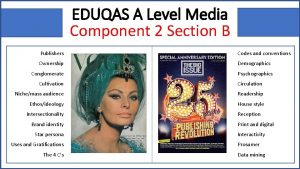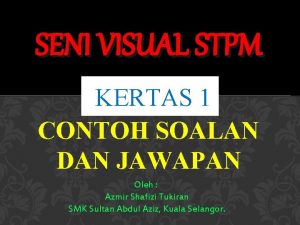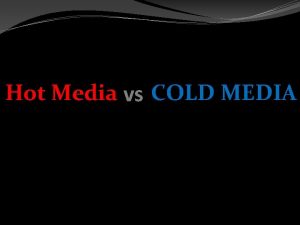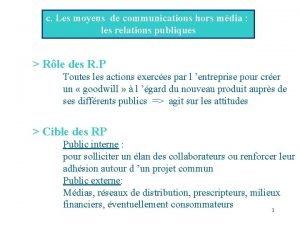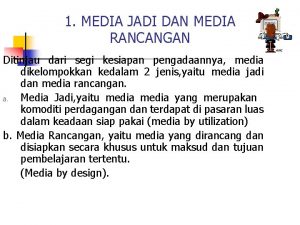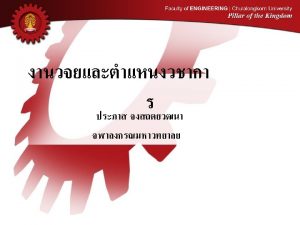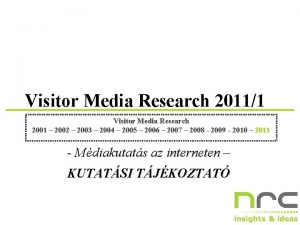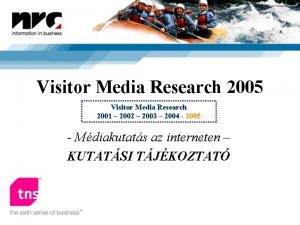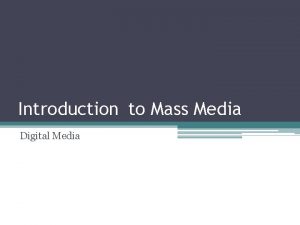Media Research How we know what we know

















- Slides: 17

Media Research How we know what we know about our audiences

Public-opinion sampling • • • The surveying industry Probability sampling Sample size Sample selection Margin of error Confidence level

The surveying industry • US media regularly survey audiences • George Gallup – The Institute of Public Opinion • 300 companies in survey business • political candidates are major clients • survey results determine what kind of advertising will run

Probability sampling • Sample size • 384 people for 95% confidence • within 5 percentage points • e. g. A race that is running 51 -49% needs larger sample • +or- 5% =46 -54 • Sample selection • every member has equal opportunity to be polled • confidence level --a larger sample can improve confidence • and reduce margin of error

Margin of error • Increasing sample size increases precision--up to a point • How much precision is necessary? • 384 +-5 percentage points • 600 +-4 percentage points • 1067 +-3 percentage points • 9, 605 +-1 percentage point

Evaluating surveys • Quota sampling • How many were interviewed & how selected? • When was poll taken? • Who paid for the poll? • What was sampling error?

Other factors, continued • • How was poll conducted? How were questions worded? In what order were they asked? “Straw Polls” Internet and 900 numbers asking for opinion • Man on the street interviews-”convenience” sampling

Measuring audience size • Newspaper and magazine audits – circulation measurement – Audit Bureau of Circulations, 1914 • Broadcast ratings – A. C. Nielsen Company (TV) – American Research Bureau--Arbitron (radio) – began in 1929 with Crossley

Audience data/ratings • 1940’s Nielsen • demographics • age, gender, income, education, religion, occupation, neighborhood, product use • today’s ratings paid for by stations, adv.

Audience measurement techniques • Interviews • Diaries • Meters – – audimeters “overnights” 4, 000 homes “Peoplemeters”

Criticism of ratings • • Discrepancies Slanted results Sample selection Hyping and trickery – “sweeps” months • Respondent accuracy • Zipping, Zapping with remote control

Measuring audience reaction • Focus groups • Galvanic skin checks • Prototype research – showing previews of TV shows & movies – try out different versions of new product, e. g. USA Today

Audience analysis • Demographics: which audience do you want to reach? • Cohort analysis – “Twenty-somethings” – Generation X – Baby-boomers – Post-War generation – World War II Vets 90’s 80’s 60’s & 70’s 50’s 40’s

Geodemographics • PRIZM system • Census data • 34 factors that distinguished neighborhoods

Psycho-demographics • • • belongers achievers societally conscious emulators experientials I-am-Me’s survivors sustainers integrated

Applied research • Media-sponsored research – technological research – policy analysis – opinion surveys

Mass communication scholarship • Effects studies • Process studies • Gratifications studies • Content analysis
 Know history know self
Know history know self Normalizing flow
Normalizing flow I know who goes before me i know who stands behind
I know who goes before me i know who stands behind Msa agar selective or differential
Msa agar selective or differential Media jadi adalah
Media jadi adalah Major advertising decisions
Major advertising decisions Examples of people as media and people in media
Examples of people as media and people in media Alta edad media y baja edad media
Alta edad media y baja edad media Como fue la literatura en la edad media
Como fue la literatura en la edad media Examples of hot and cold media
Examples of hot and cold media Difference between differential and selective media
Difference between differential and selective media A level media vogue
A level media vogue Maksud seni visual stpm
Maksud seni visual stpm Hot media and cold media
Hot media and cold media Moyens de communication hors média
Moyens de communication hors média Wired and wireless media
Wired and wireless media Perbedaan media jadi dan media rancang
Perbedaan media jadi dan media rancang Luhan hot
Luhan hot





